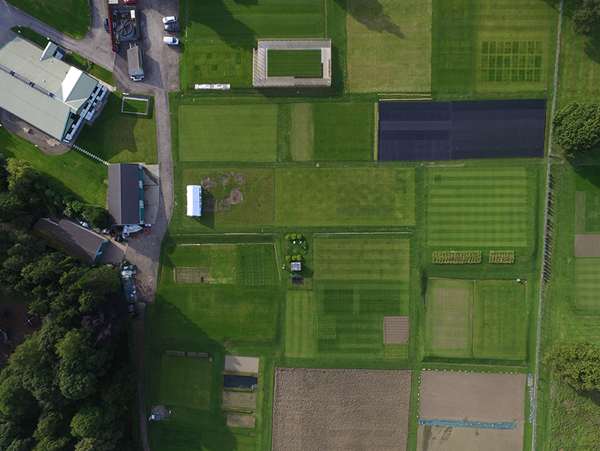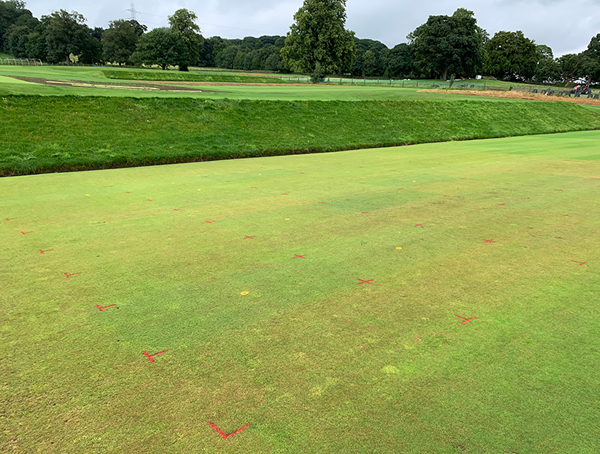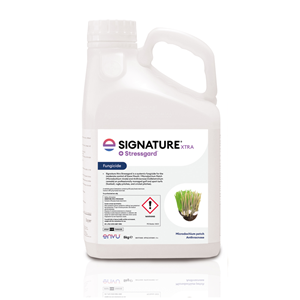Combatting summer stress with Stressgard technology
Trial results highlight the most effective solutions to tackle summer turf stress.
Summer stress is one of the most frustrating issues greenkeepers are faced with each year. It can be costly to combat and time consuming. But more importantly, if it’s not dealt with, it can have long term impacts on the quality of turf and increase the risk of disease.
Factors than can lead to drought stress include
- Drought
- Heat
- Increased traffic
As turf stress can occur at any time and be due to a range of factors, it’s incredibly important for greenkeepers to understand the risk factors. Therefore, having access to the tools and knowledge that will help them to tackle the issue is incredibly important.
Envu Environmental Science have been working closely with the STRI for the last two years to better understand turf stress and disease control. More recently, the collaboration has focused on investigating the most efficient methods to tackle summer stress in turf .
How was the trial carried out?
In the most recent trial with STRI, in June 2020, the effects of different treatments on turf stress were investigated. The treatments included:
- Growth regulator
- Wetting agent
- Pigment
- A leading competitor fungicide
- Signature® Xtra
- Exteris® Stressgard
- Untreated control
The turf at the trial site was divided into plots, with each plot receiving a different treatment. All treatments were applied between June and mid - August.
Throughout this period and up until December 2020, plots were assessed every 14 days for turf quality, density and disease level.
Conditions throughout the trial
The summer of 2020, when this particular trial took place, was one of the hottest years on record in the UK, with temperatures soaring above 30oC in August. This means the plots were exposed to extreme heat at the time which led to a significant degree of stress for the turf.
This was coupled with applied wear through the STRI’s wear machine to simulate the wear that turf in a golf course environment would be subjected to. Rainfall was also prevented from reaching the plots as much as possible through the use of covers during rainfall events to ensure drought stress effects occurred.
Turf quality
Maintaining consistent turf quality is a key focus throughout the year, but it’s even more important during the summer months, when player numbers will be at their highest. However, increased footfall and weather conditions can exacerbate stress and its impact on turf quality.
Due to the conditions during the trial, it was expected that the plots would be highly stressed with poor turf quality and density. Despite these conditions, it was promising to see the Stressgard plots showed positive results against turf stress.
Turf quality was the highest on the Exteris® Stressgard plots and likewise, these treated plots also had the greatest turf density of the trial. The treated plots had a 10% better live ground cover compared to the untreated plots.
As the trial progressed into September, turf quality improved across all treatments and plots treated with the Stressgard formulations maintained above average levels. This is likely to be a result of the reduction in intense solar radiation and increased precipitation in autumn, which lead to a decrease in stress on all plots.
As expected, turf quality across all treatments declined from October through to December as the effects of the treatments expired, and the environmental conditions weren’t conducive to good growth. However, Exteris® Stressgard continued to achieve very good turf quality, which was a positive result.
As of Oct 1st 22, the Environmental Science division of Bayer was divested. Note that this content was produced prior the separation".
Disease control
Tackling turf stress early in the summer is important to prevent disease later on in the autumn. Therefore, in this trial, a key component was investigating how disease could be minimised using the different plant protection solutions.
At the start of the trial, all treatment plots were disease free as expected, but by mid-August, Anthracnose started to appear in the treatment plots. This is likely due to the environmental conditions at the time of year, which were conducive to anthracnose establishment.
Anthracnose continued to linger until mid-September, and then Microdochium patch started to establish after, from mid-October onwards
Up to mid-October, 63 days after the last applications, the average level of disease across all trial plots was low at 4.9%, with the untreated plots having the highest level of disease at 9%.
The standout result from the trial, however, was that the treatment plots with the least amount of disease was Exteris® Stressgard at 0.8%.
After this point in the season, the treatments would be expected to no longer have any curative or preventative effects. But, Exteris® Stressgard plots continued to perform well and had the lowest levels of infection rates with 5.2% disease in late October rising to 14% in November. The corresponding untreated plots ranged from 31.2% in October, peaking to 40% in late November.
Significance of the trial results
This trial shows that by supporting plant health with effective methods and products, greenkeepers can give turf a better chance at fighting disease long-term.
The results also highlight and proves the benefits and extended residual control Stressgard formulated products have on turf health and disease. Such technology will be an incredibly helpful tool for greenkeepers and could help to provide relief from the pressures of turf stress.
To read the full report from the summer stress trial, click here




